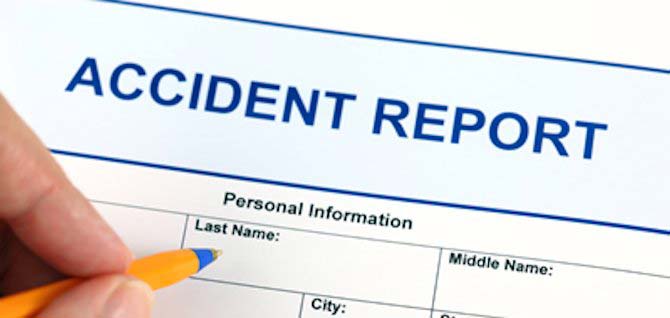Atlantic Training specializes in online training concentrating on workplace safety, HR compliance and soft skills.
Latest posts by Atlantic Research Team (see all)
- Tuberculosis Prevention and Control: Everything You Need to Know - September 12, 2024
- CDL Defensive Driving Techniques: Your Key to Safer, Stress-Free Roads as a Commercial Driver - September 6, 2024
- Dig Safely: Your Guide to Mastering Excavation, Trenching, and Shoring in Construction - August 29, 2024

Jack Benton from EHS Safety News America shares with us the key elements in writing a good and informative accident or incident report.
An incident report needs to include all the essential information about the accident or near-miss. The report-writing process begins with fact finding and ends with recommendations for preventing future accidents.
You may use a special incident reporting form, and it might be quite extensive. But writing any incident report involves four basic steps, and those are the focus of today’s post.
1. Find the Facts
To prepare for writing an accident report, you have to gather and record all the facts. For example:
- Date, time, and specific location of incident
- Names, job titles, and department of employees involved and immediate supervisor(s)
- Names and accounts of witnesses
- Events leading up to incident
- Exactly what employee was doing at the moment of the accident
- Environmental conditions (e.g. slippery floor, inadequate lighting, noise, etc.)
- Circumstances (including tasks, equipment, tools, materials, PPE, etc.)
- Specific injuries (including part(s) of body injured and nature and extent of injuries)
- Type of treatment for injuries
- Damage to equipment, materials, etc.

2. Determine the Sequence
Based on the facts, you should be able to determine the sequence of events. In your report, describe this sequence in detail, including:
- Events leading up to the incident. Was the employee walking, running, bending over, squatting, climbing, lifting operating machinery, pushing a broom, turning a valve, using a tool, handling hazardous materials, etc.?
- Events involved in the incident. Was the employee struck by an object or caught in/on/between objects? Did the worker fall on the same level or from a height? Did the employee inhale hazardous vapors or get splashed with a hazardous chemical?
- Events immediately following the incident. What did the employee do: Grab a knee? Start limping? Hold his/her arm? Complain about back pain? Put a hand over a bleeding wound? Also, describe how other co-workers responded. Did they call for help, administer first aid, shut down equipment, move the victim, etc.?
The incident should be described on the report in sufficient detail that any reader can clearly picture what happened. You might consider creating a diagram to show, in a simple and visually effective manner, the sequence of events related to the incident and include this in your incident report. You might also wish to include photos of the accident scene, which may help readers follow the sequence of events.

3. Analyze
Your report should include an in-depth analysis of the causes of the accident. Causes include:
- Primary cause (e.g., a spill on the floor that caused a slip and fall)
- Secondary causes (e.g., employee not wearing appropriate work shoes or carrying a stack of material that blocked vision)
- Other contributing factors (e.g., burned out light bulb in the area).
4. Recommend
Recommendations for corrective action might include immediate corrective action as well as long-term corrective actions such as:
- Employee training on safe work practices
- Preventive maintenance activities that keep equipment in good operating condition
- Evaluation of job procedures with a recommendation for changes
- Conducting a job hazard analysis to evaluate the task for any other hazards and then train employees on these hazards
- Engineering changes that make the task safer or administrative changes that might include changing the way the task is performed
This article was written by Jack Benton of EHS Safety News America

Need help with your safety training? The following training blogs and titles are available to help with workplace safety incidents:
Get safety training mentioned in this article below:





